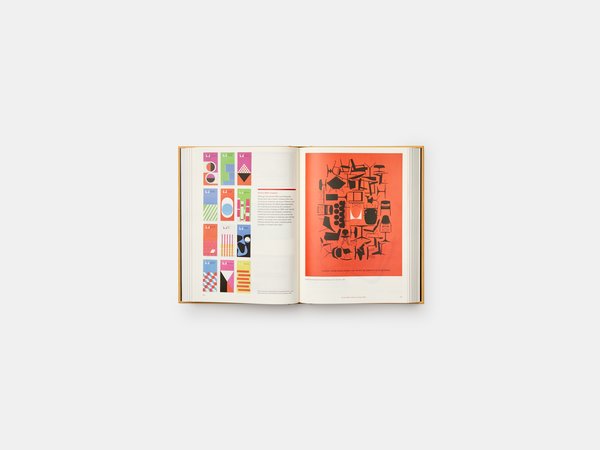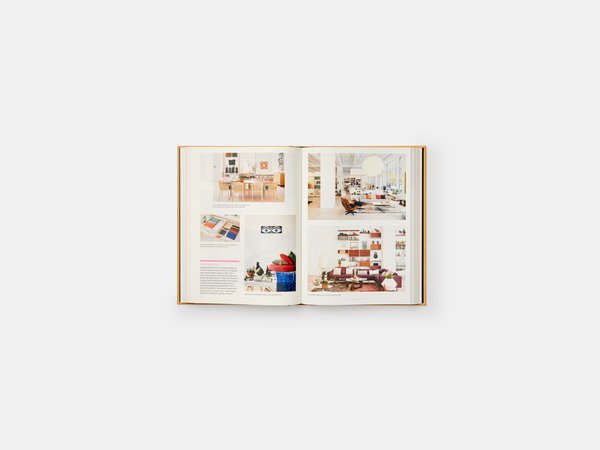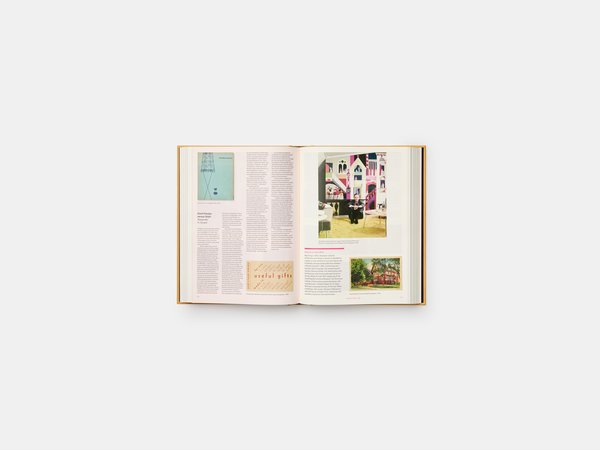In the pages of Phaidon’s “Herman Miller: A Way of Living,” we find the evolution of the legendary furniture company—and its forward-thinking designs that have helped shape how we live and work.

Most design fans are familiar with Herman Miller’s extensive catalogue of furnishings by world-renowned designers. Originally founded in 1905 as Star Furniture Co. and rebranded as the Herman Miller Furniture Company in 1923, the company launched its first modern furniture line in 1933—with a set of bedroom furniture and seven “radically modern” clocks designed by Gilbert Rohde for the 1933 Chicago World’s Fair.

Phaidon’s “Herman Miller: A Way of Living”—at over 600 pages including references, an index, and a timeline—is filled with color illustrations ranging from inspiration images to Herman Miller advertisements.
Herman Miller: A Way of Living, edited by Amy Auscherman, Sam Grawe, & Leon Ransmeier; Phaidon; Herman Miller Collection Catalog, 1948: Herman Miller Graphics (pages 236-237)
Phaidon’s new book, Herman Miller: A Way of Living, is a must for design lovers, midcentury aficionados, and of course, Herman Miller fans. The book covers the history of the brand through 10 of their most significant collections and pieces, but also includes some of their lesser-known items that are equally thoughtful.

Spreads are colorful and engaging, with the majority of the content being visual images from the Herman Miller archives, from magazines and other publications, and various other publications.
Herman Miller: A Way of Living, edited by Amy Auscherman, Sam Grawe, & Leon Ransmeier; Phaidon; Textiles & Objects, 1961: 251 Park Avenue South (pages 320-321)
Each chapter highlights how the ever-evolving culture of America, particularly in the midcentury era, affected the company, and how Herman Miller impacted culture in the United States through their furniture, textiles, housewares, design solutions and ideas, and associated artists, architects, innovators, and designers.

Because the book is organized chronologically, it’s possible to trace concepts, color stories, materials and processes, and design culture at large over the course of the 10 chapters.
Herman Miller: A Way of Living, edited by Amy Auscherman, Sam Grawe, & Leon Ransmeier; Phaidon; Textiles & Objects, 1961: Good Design versus Style, Alexander H. Girard (pages 276-277)
See the full story on Dwell.com: 15 Herman Miller Projects That Have Changed Our Way of Living